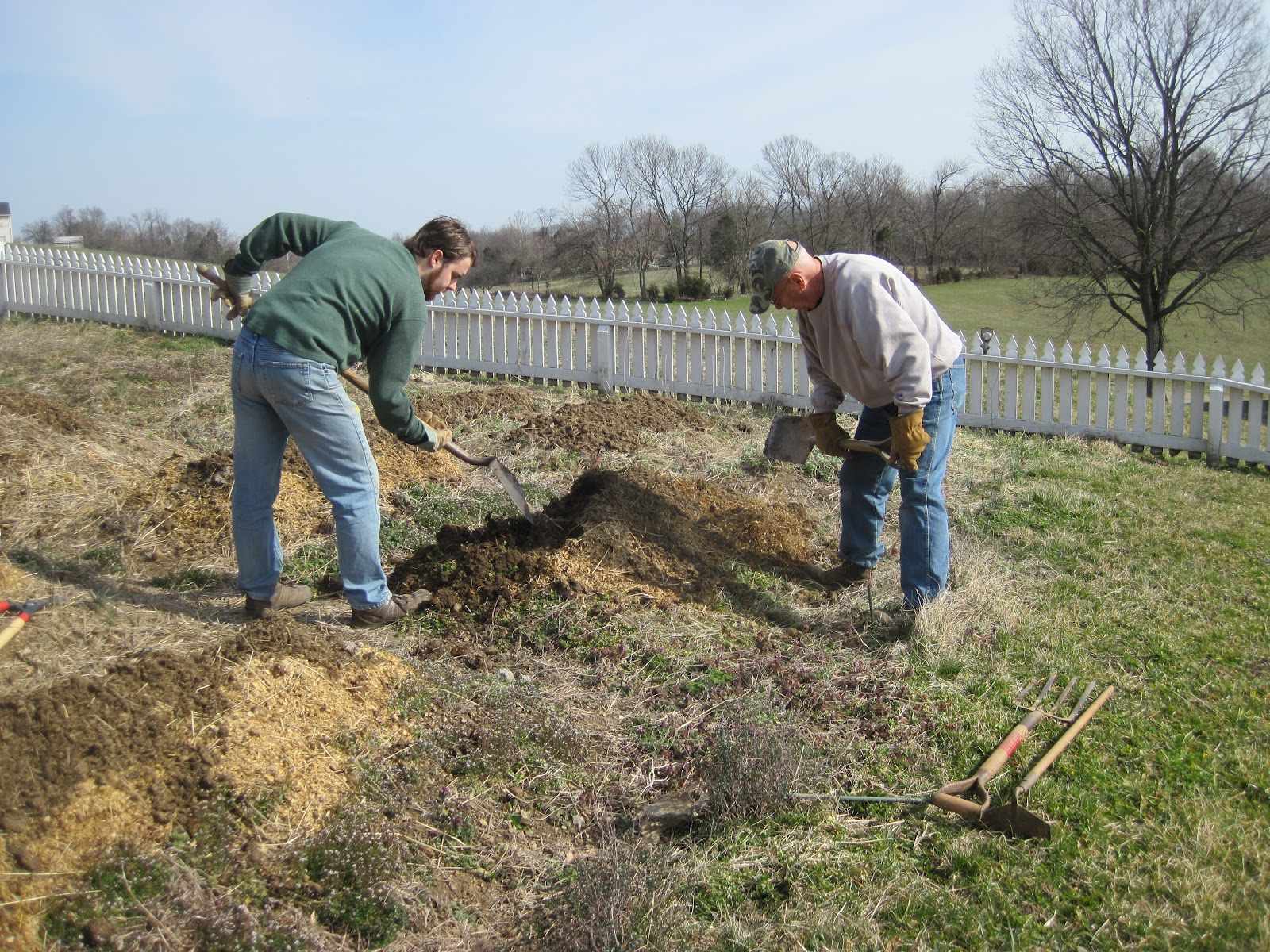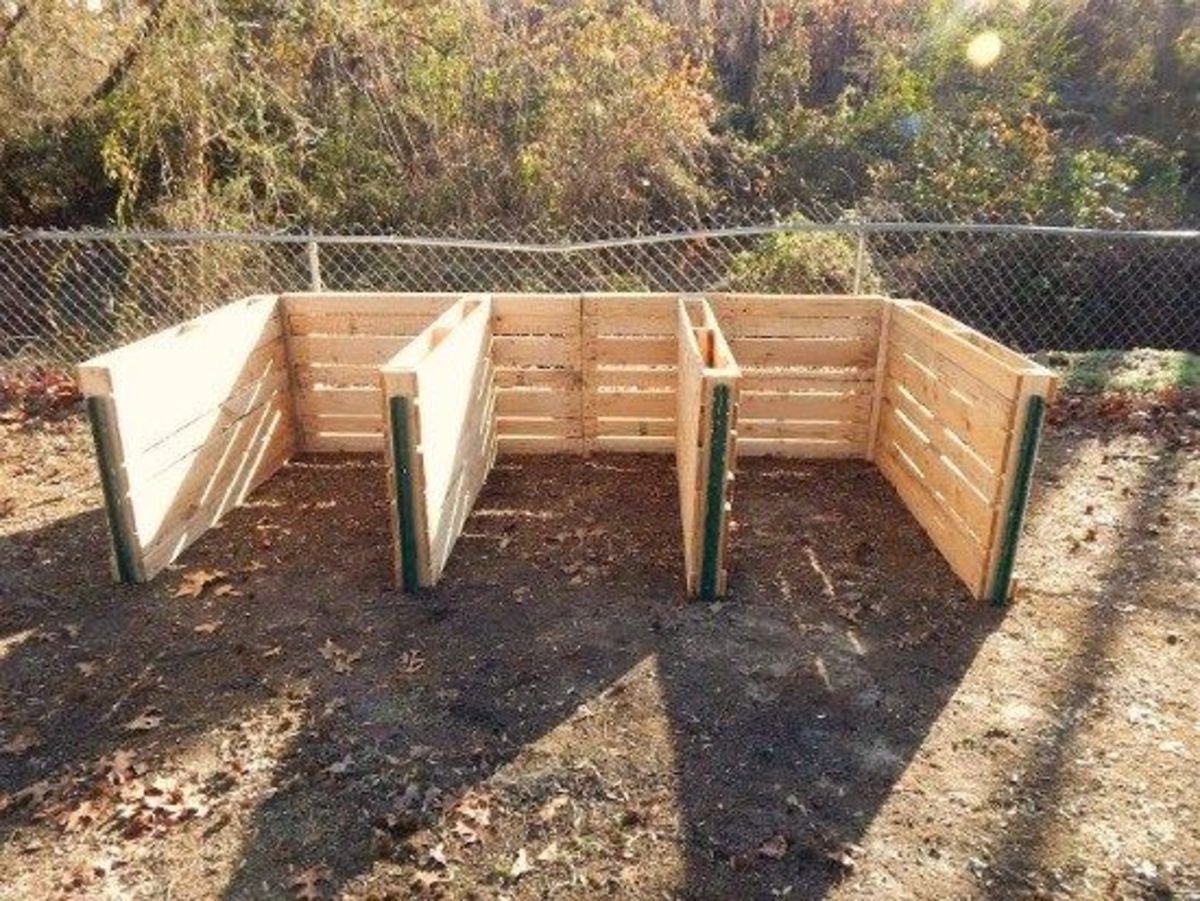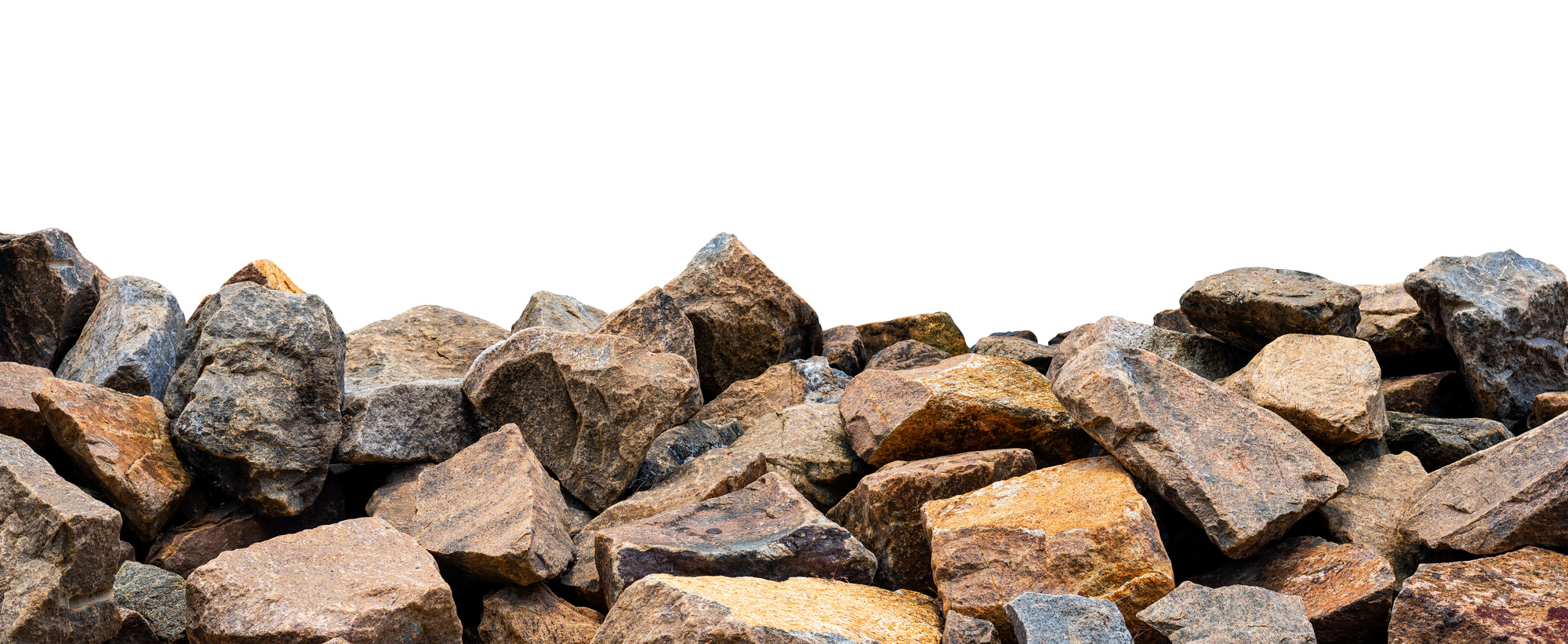Home>Gardening Basics>Understanding Soil>What Is The Layer Of Rock That Soil Rests On Called


Understanding Soil
What Is The Layer Of Rock That Soil Rests On Called
Published: February 11, 2024
Learn about the layer of rock that soil rests on, known as understanding soil. Enhance your knowledge on soil composition and its significance in agriculture and gardening.
(Many of the links in this article redirect to a specific reviewed product. Your purchase of these products through affiliate links helps to generate commission for Chicagolandgardening.com, at no extra cost. Learn more)
Table of Contents
Introduction
Soil is a vital component of our planet’s ecosystem. It plays a crucial role in supporting plant growth, storing water, and providing nutrients for various organisms. However, beneath the surface of the soil lies a layer of rock that is equally significant but often overlooked. This layer acts as a foundation for the soil above it and influences its properties and composition.
The layer of rock that soil rests on is referred to as the “parent rock” or “bedrock.” This layer serves as a solid base and is responsible for providing stability and structure to the soil above it. Understanding the characteristics and formation of this layer can offer valuable insights into the overall health and fertility of the soil.
In this article, we will delve into the significance of the layer of rock in soil formation and explore its key features. By gaining a deeper understanding of this fundamental layer, we can better appreciate the complexities and marvels of the soil beneath our feet.
Definition of Soil
Soil is a dynamic and complex natural resource that forms the uppermost layer of the Earth’s crust. It is a mixture of minerals, organic matter, water, and air, which provides a medium for plant growth and supports various forms of life. While soil may appear as a simple substance, it is far from it.
From a scientific standpoint, soil is defined as a naturally occurring, unconsolidated or loose material that covers the Earth’s surface. It is comprised of different layers, known as horizons, that develop over time due to the processes of weathering, erosion, and biological activity. Each horizon possesses unique characteristics and plays a specific role in the overall functionality of the soil.
Soil acts as a complex, living system, where countless organisms, ranging from microorganisms to insects, thrive. It serves as a habitat, providing shelter and nutrients for a diverse array of organisms. Additionally, soil serves as a significant reservoir of water and plays a crucial role in the hydrological cycle by regulating water movement and storing water for plant uptake and groundwater recharge.
Overall, soil is a precious resource that supports agriculture, sustains ecosystems, and impacts various aspects of human life. Its composition, structure, and fertility are influenced by factors such as climate, topography, parent material, vegetation, and time. Understanding the definition and characteristics of soil allows us to appreciate its importance and work towards its preservation and sustainable management.
Importance of Soil
Soil is often referred to as the “skin of the Earth” due to its crucial role in sustaining life. It serves as a foundation for plants to grow, supports biodiversity, filters water, and contributes to nutrient cycling. The importance of soil cannot be overstated, and here are some key reasons why:
- Food Production: Soil is the primary source of nutrients for plants, which are essential for agricultural production. It provides a medium for plant roots to anchor themselves and absorb water and vital minerals. Healthy and fertile soil is vital for ensuring an abundant and sustainable food supply for human consumption.
- Ecosystem Support: Soil supports a wide range of organisms, including insects, worms, bacteria, fungi, and plant roots. It acts as a habitat for these organisms and allows them to carry out essential functions such as decomposition, nutrient cycling, and biological interactions. This biodiversity is crucial for the health and resilience of ecosystems.
- Water Regulation: The structure of soil plays a critical role in regulating water movement. It absorbs and holds water, preventing runoff and erosion. Soil acts as a natural filter, purifying water as it percolates through its layers. This process helps in recharging groundwater reserves and maintaining the quality of our water resources.
- Carbon Storage: Soil is a significant reservoir for carbon, playing a crucial role in mitigating climate change. Organic matter in the soil stores carbon in the form of humus, preventing it from being released into the atmosphere as carbon dioxide. Sustainable soil management practices can enhance carbon sequestration and contribute to reducing greenhouse gas emissions.
- Engineering Support: Soil provides a stable foundation for the construction of buildings, roads, and infrastructure. Understanding the properties and stability of soil is essential for engineering projects to ensure the safety and durability of structures.
The importance of soil goes beyond its direct benefits; it contributes to our overall well-being and the health of the planet. Recognizing and preserving this vital resource is crucial for long-term sustainability and the safeguarding of ecosystems and human livelihoods.
Layers of Soil
Soil is composed of distinct layers, known as horizons, which vary in their composition, color, and texture. Understanding these layers is essential as they influence the overall fertility and characteristics of the soil. Typically, soil is divided into three main layers: topsoil, subsoil, and the parent material or bedrock.
- Topsoil (A Horizon): The topsoil is the uppermost layer of soil, ranging from a few inches to a foot in depth. It is rich in organic matter, minerals, and nutrients, making it the most fertile layer for plant growth. The topsoil is teeming with microorganisms and is responsible for nutrient cycling and water retention. This layer is crucial for agriculture and gardening purposes, as it supports the majority of plant roots and provides an ideal environment for beneficial soil organisms.
- Subsoil (B Horizon): The subsoil lies beneath the topsoil and is characterized by a lower organic content and higher concentrations of minerals. It is usually denser and less fertile than the topsoil. The subsoil acts as a transition zone, allowing for the movement of water and nutrients between the topsoil and the underlying parent material. The composition and characteristics of the subsoil vary depending on factors such as climate, parent material, and vegetation.
- Parent Material or Bedrock (C Horizon): The parent material, also referred to as the C horizon, is the lowest layer of soil. It consists of weathered rock fragments and is largely unaffected by biological activity. The parent material acts as the ultimate source of minerals and nutrients for the soil above it. It serves as a solid foundation and provides stability to the layers of soil above. Over time, the parent material may undergo weathering and contribute to the formation of new soil.
These layers of soil interact and influence each other’s properties, with the topsoil being the most vital for plant growth and agricultural purposes. Understanding the different soil layers enables us to assess the fertility, drainage capacity, and overall health of the soil. It also guides us in implementing appropriate soil management practices to maintain and improve soil quality.
The Bottom Layer: The Layer of Rock
At the bottom of the soil profile lies the layer of rock, also known as the parent material or bedrock. This layer serves as the foundation on which the soil is formed and developed. The layer of rock plays a crucial role in determining the characteristics and qualities of the overlying soil.
The layer of rock is the result of geological processes, such as weathering and erosion, which break down solid rock over time. These processes can be physical, chemical, or biological in nature. Physical weathering, caused by elements like wind, water, and temperature changes, breaks the rock into smaller fragments. Chemical weathering, involving reactions with water and acids, alters the mineral composition of the rock. Biological weathering, caused by the activity of organisms, agents such as plants and burrowing animals, contributes to the breakdown of the rock.
The layer of rock can have varying compositions, depending on the type of parent material. It can be composed of sedimentary rock, formed from accumulated layers of sediment over time. It can also be igneous rock, formed from molten magma cooling and solidifying. Lastly, it can be metamorphic rock, resulting from the transformation of existing rock under extreme heat and pressure.
The characteristics of the layer of rock directly influence the soil above it. For example, rocks that are rich in minerals can contribute to the fertility of the soil, providing essential nutrients for plant growth. Conversely, rocks with low mineral content can result in relatively infertile soils. The composition of the rock layer can also affect the pH level of the soil, which further influences the types of plants that can thrive in the area.
The layer of rock also plays a significant role in determining the drainage capacity of the soil. Impermeable rocks, such as clay or dense limestone, can hinder water movement through the soil. Conversely, more porous rocks, like sandstone or gravel, can facilitate better drainage. This characteristic is crucial in determining the suitability of soil for various agricultural practices and affects the overall health of plants and organisms relying on the soil’s moisture balance.
In summary, the layer of rock is the foundation on which soil is formed. Its composition, characteristics, and properties all influence the fertility, drainage capacity, and pH level of the overlying soil. Understanding the layer of rock is essential for assessing soil quality, determining suitable agricultural practices, and preserving the health of ecosystems.
Formation of the Layer of Rock
The layer of rock, also known as the parent material or bedrock, is formed through a geological process that takes place over long periods of time. It undergoes a series of transformations and changes, ultimately contributing to the formation of soil.
The process of rock formation begins with the accumulation of sediments, such as sand, silt, clay, or organic material, through various natural forces like water, wind, or ice. Over time, these sediments become compacted and lithified, forming sedimentary rocks. Examples of sedimentary rocks include sandstone, limestone, and shale.
Another way rock layers are formed is through volcanic activity. When molten magma erupts from the Earth’s mantle onto the surface, it cools and solidifies, forming igneous rocks. Examples of igneous rocks include basalt, granite, and obsidian. These rocks can also be exposed to weathering and erosion, breaking down into smaller particles that contribute to the soil’s composition.
Metamorphic rocks, on the other hand, are formed through the transformation of existing rocks under intense heat and pressure. This process occurs deep within the Earth’s crust and can result in rocks such as marble, slate, and gneiss. Metamorphic rocks can undergo changes in their mineral composition and physical structure, impacting the characteristics of the layer of rock.
Various factors contribute to the formation of the layer of rock. Geographical and geological processes, including tectonic activity, weathering, erosion, and deposition, all play a role. Climate conditions, such as temperature and precipitation, also influence the rate at which these processes occur.
Over time, the layer of rock can be exposed at the surface through erosion or uplift, allowing for further weathering and the development of soil above it. The type of rock in the layer, as well as the weathering processes it undergoes, can shape the characteristics of the soil. For example, weathering of limestone can lead to the development of alkaline soils.
Understanding the formation of the layer of rock provides insights into the geological history of an area and helps us comprehend the composition and properties of the soil above it. It is a critical component in understanding the larger picture of the Earth’s processes and the interconnection between rocks, soil, and the ecosystems they support.
Characteristics of the Layer of Rock
The layer of rock, also known as the parent material or bedrock, possesses distinct characteristics that influence the formation and composition of the soil. These characteristics include the type of rock, mineral composition, texture, permeability, and stability.
The type of rock in the layer can vary, including sedimentary, igneous, and metamorphic rocks. Sedimentary rocks, such as sandstone or limestone, are composed of layers of sediment that have been compacted and hardened over time. Igneous rocks, like granite or basalt, are formed from the cooling and solidification of molten magma. Metamorphic rocks, such as marble or slate, are formed through the transformation of existing rocks due to extreme heat and pressure.
The mineral composition of the rock layer contributes to the fertility and chemical properties of the soil above it. Rocks rich in minerals like calcium, potassium, and phosphorus can provide essential nutrients for plant growth. The presence of trace elements in the parent material can also influence the availability of micronutrients in the soil.
The texture of the rock layer affects its permeability, or the ability to allow the passage of water. Rocks with a porous or fragmented structure, such as sandstone or gravel, have high permeability and allow water to flow through more easily. In contrast, denser rocks like clay or dense limestone can restrict the movement of water, affecting the drainage capacity of the soil above.
The stability of the layer of rock is crucial for the overall integrity of the soil. A solid and stable rock layer provides a strong foundation, preventing soil erosion and ensuring the soil retains its structure. Stability can be influenced by factors such as the type of rock, geological formations, and external forces like earthquakes or weathering processes.
The characteristics of the layer of rock directly impact the properties and composition of the overlying soil. They influence factors such as soil fertility, pH levels, drainage capacity, and water-holding capacity. Understanding these characteristics is essential for assessing soil quality, determining suitable land use practices, and implementing effective soil management techniques.
Functions of the Layer of Rock
The layer of rock, or parent material, in the soil profile performs essential functions that contribute to the overall health and stability of the soil ecosystem. These functions include providing a solid foundation, influencing nutrient availability, supporting water movement, and serving as a source of minerals.
One of the primary functions of the layer of rock is to provide a stable foundation for the layers of soil above it. It acts as a support system, preventing soil erosion and maintaining soil structure. Without a solid rock layer, the upper layers of soil would be prone to shifting and erosion, jeopardizing the integrity of the soil ecosystem.
The layer of rock also plays a crucial role in influencing nutrient availability in the soil. As rainwater percolates through the upper layers of soil, it interacts with the parent material, picking up minerals and nutrients present in the rocks. These dissolved nutrients are then made available to plants as they extract water from the soil, contributing to their growth and development.
Additionally, the layer of rock acts as a conduit for water movement within the soil profile. Porous rocks, such as sandstone or gravel, can facilitate the downward movement of water, aiding in drainage and preventing waterlogging. On the other hand, less permeable rocks can limit water movement, affecting the water-holding capacity and drainage characteristics of the soil.
The layer of rock also serves as a source of minerals for the soil. The breakdown and weathering of rocks over time release mineral particles and ions into the soil. These minerals, such as calcium, potassium, and phosphorus, are essential for plant growth and play a vital role in nutrient cycling within the soil ecosystem. The mineral composition of the parent material influences the fertility and nutrient availability of the soil.
In addition to these functions, the layer of rock can provide physical support for soil organisms. It acts as a substrate for burrowing animals and microorganisms, offering habitats and protective niches for their survival and activity. The stability and structure of the rock layer enable the formation of complex soil ecosystems that support various organisms and contribute to soil fertility.
The functions performed by the layer of rock are integral to the overall functionality and health of the soil ecosystem. From providing a solid foundation for soil structure to influencing nutrient availability and water movement, the layer of rock plays a vital role in sustaining the diverse life forms that rely on the soil for their existence.
Conclusion
The layer of rock, also known as the parent material or bedrock, is a crucial component of the soil profile. It serves as a foundation, influencing the formation and composition of the soil layers above it. The characteristics of the layer of rock, including type, mineral composition, texture, permeability, and stability, directly impact the fertility, drainage capacity, and overall health of the soil.
Understanding the formation, characteristics, and functions of the layer of rock provides valuable insights into the intricate processes that shape our soil ecosystems. The layer of rock acts as a solid base, preventing erosion and providing stability. It also influences nutrient availability, supporting the growth and development of plants, and contributes to the movement and distribution of water within the soil.
The layer of rock serves as a source of minerals, releasing essential nutrients that nourish the soil and support the diverse organisms that inhabit it. It provides a physical substrate for soil organisms, offering habitats and supporting the intricate web of life within the soil ecosystem.
By recognizing the significance of the layer of rock, we can appreciate the complexities and interconnectedness of the soil beneath our feet. Effective soil management practices should consider the characteristics and functions of the layer of rock to promote soil health, fertility, and sustainability.
Preserving the layer of rock and taking steps to prevent its degradation are vital for the long-term health and stability of our soil ecosystems. Through sustainable land management practices and responsible land use, we can ensure the preservation of this essential layer and the biodiversity it supports.
Ultimately, the layer of rock plays a foundational role in soil formation and supports the vital functions of soil, including food production, ecosystem support, water regulation, carbon storage, and engineering support. Recognizing and valuing the layer of rock encourages us to adopt sustainable practices that safeguard the health of our soils, enhance agricultural productivity, and preserve the delicate balance of our ecosystems for future generations.








